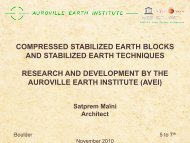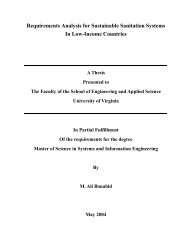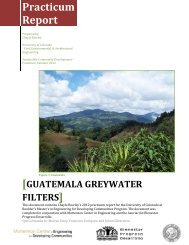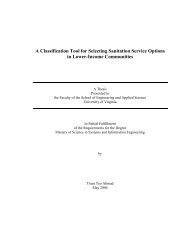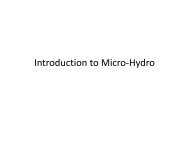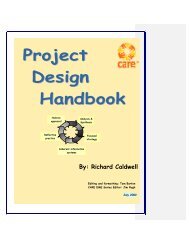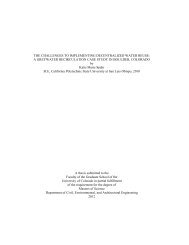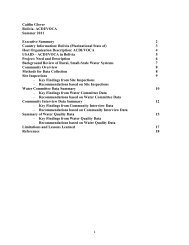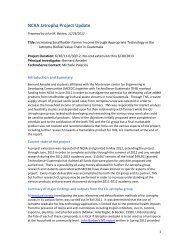SCEBs - University of Colorado Boulder
SCEBs - University of Colorado Boulder
SCEBs - University of Colorado Boulder
Create successful ePaper yourself
Turn your PDF publications into a flip-book with our unique Google optimized e-Paper software.
transported sealed in airtight five gallon buckets to prevent moisture loss during<br />
transport. Samples that contain too much or too little natural water content will need to<br />
be amended before use in SCEB production.<br />
3.4. Soil Classification<br />
A grain size analysis is required to classify a soil. A proper classification will<br />
correctly identify a soil, thus providing insight to the soil‟s properties. Soils are tested<br />
and classified as per the Unified Soil Classification System – USCS (ASTM D2487).<br />
Clay and silt are commonly referred to as fine grained soils, while sand and clay are<br />
referred to as coarse grained soils. A sieve test (ASTM D422) is performed to determine<br />
the soil grain size distribution. For fine grained soils, a Liquid and Plastic limit tests<br />
(ASTM D4318) is carried out (also known as the Atterberg limit test). The Atterberg<br />
limit test provides a method for quantifying a soil‟s plasticity, providing information<br />
regarding the amount <strong>of</strong> clay present. Using the information obtained from the grain size<br />
distribution and Atterberg limit tests a soil classification is determined using the process<br />
provided by the USCS. Any soil found to contain organic material is unacceptable. The<br />
sand used for aggregate must have angular particle characteristics and its gradation must<br />
be compatible with that <strong>of</strong> the clayey soil to be used.<br />
Current literature and applicable building codes do not <strong>of</strong>fer guidelines for<br />
selecting an optimal soil for earthen construction based on the soil‟s USCS classification.<br />
The case studies presented in Chapter 4, <strong>of</strong>fer some goals for optimal soil classifications.<br />
The sand aggregate used is ideally well-graded with a USCS classification <strong>of</strong> SW. The<br />
clayey soil used contains a significant amount <strong>of</strong> clay minerals with a USCS<br />
classification <strong>of</strong> CL. In addition, the clayey soil should achieve a plasticity index which<br />
17



